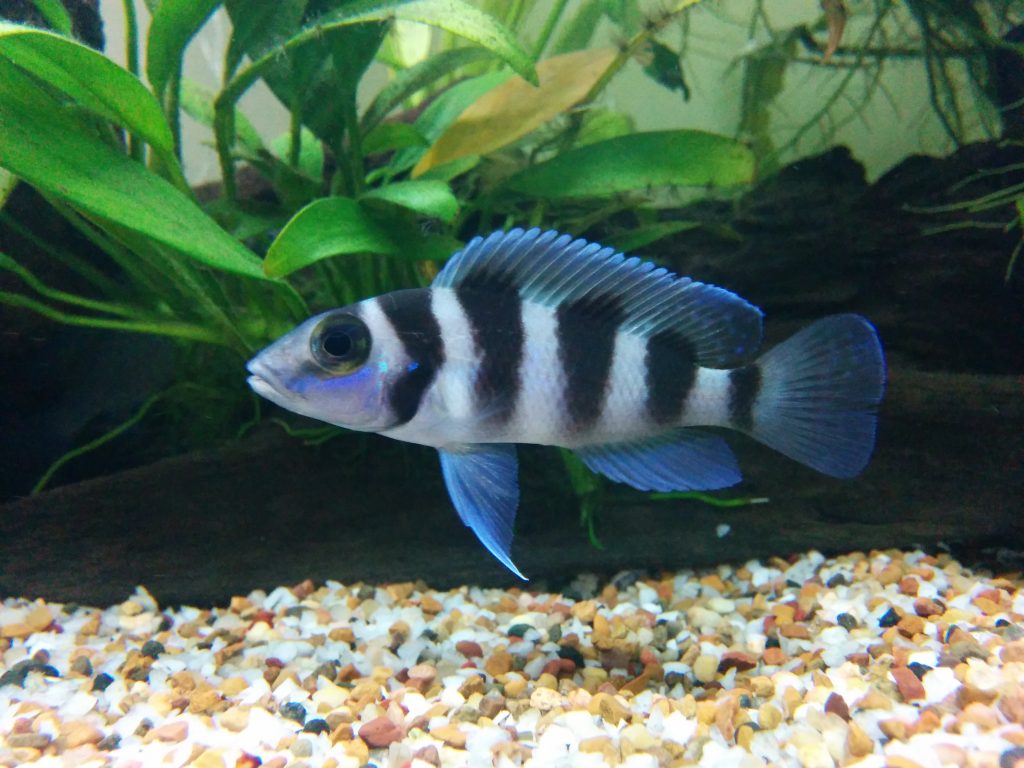The Neolamprologus tretocephalus is native to Lake Tanganyika, one of Africa’s great lakes. The species is also known as the Five-Bar Cichlid or sometimes just a Tret. They are rarely seen in aquariums, but are nonetheless a beautiful and prized fish species. They are considered a “dwarf” cichlid, but can reach sizes of up to 15 centimeters (just under 6 inches).

Compatibility
Five-Bar cichlids can be housed with other African cichlid species, particularly those from Lake Tanganyika or from the Mbuna genus. In this situation, only a single five-Bar cichlid should be in the aquarium or else aggression will become a problem. Two specimens should only share an aquarium if they are a breeding pair; but there should not be any other fish in the same tank. Some mature specimens will be immensely aggressive and can be challenging to keep with other fish.
Tank Conditions
Five-bar cichlids demand clean, clear and well filtrated water that is hard and alkaline, with a pH of 8. Weekly partial water changes are a must and toxins such as ammonia, nitrites and nitrated are not tolerated and must be constantly monitored. The water temperature should be 25-26 degrees Celsius, or 78 degrees Fahrenheit. Even though they are a small fish, they require a large tank of at least three feet (1.2m) wide.

Diet & Feeding
Five-bar cichlids are carnivores and their diet requires a good supply of live food and commercial cichlid meat. They will also eat flakes and pellets, but as bottom-dwellers they will only eat these foods if they sink. A good mix of different foods is important to meet all their dietary requirements and keep them healthy over the long-term.
Closing Thoughts
Five-bar cichlids are a visually appealing and somewhat easy to maintain fish suitable for intermediately skilled aquarium keepers. They are fascinating to watch as they swim gracefully around rocks and plants in the aquariums. Just make sure you keep the lid on the tank, because they are spectacularly (and tragically) good at jumping.

1 thought on “Keeping and breeding the Five-Bar Cichlid”